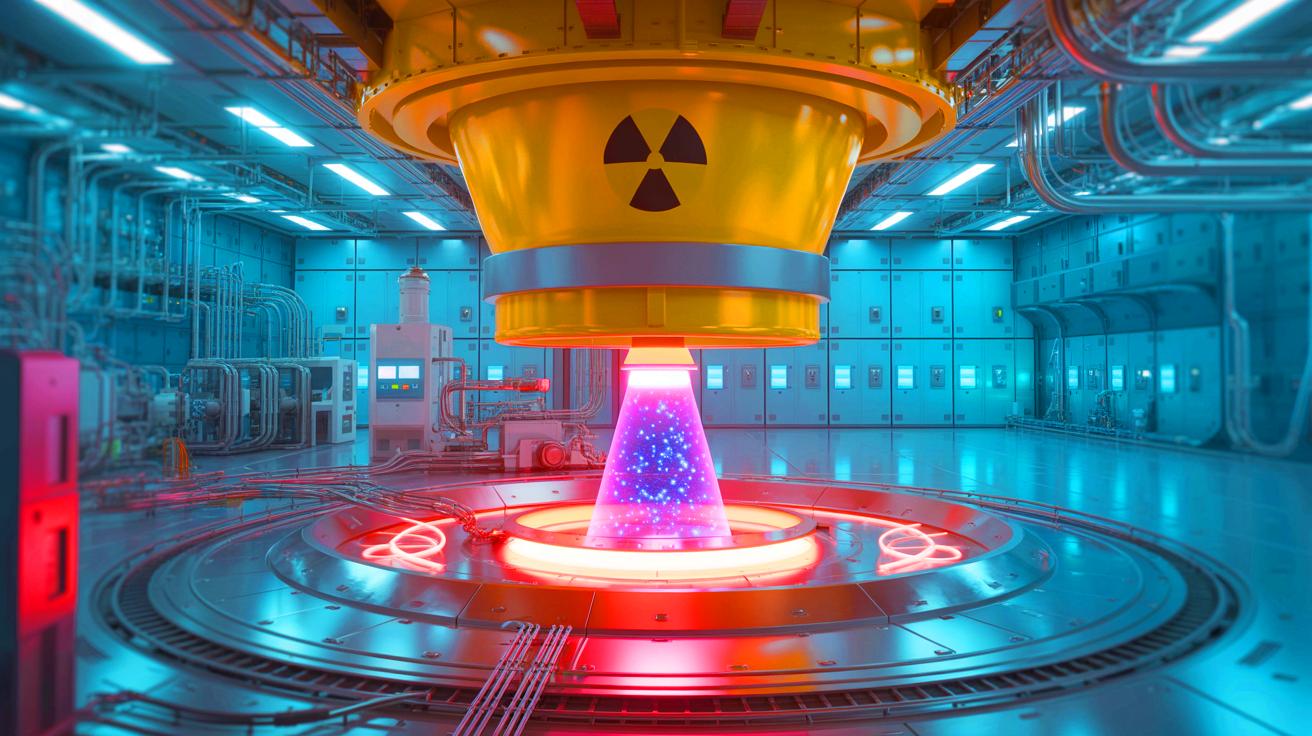
A group of researchers at the Los Alamos National Laboratory, part of the US government, is aiming to convert nuclear waste into tritium, a hydrogen isotope that may eventually provide fuel for nuclear fusion power facilities. This initiative was shared by physicist Terence Tarnowsky from Los Alamos during the autumn conference of the American Chemical Society in Washington DC.
A nuclear fusion facility would utilize deuterium and tritium, two hydrogen isotopes, to fuse them, resulting in helium while releasing vast amounts of energy and generating minimal radioactive waste. Although deuterium can be easily sourced from seawater, tritium is exceedingly scarce on our planet.
‘The first fusion power plants will rely on the deuterium-tritium (D–T) fusion mechanism,’ explains Tarnowsky. ‘The most accessible route to fusion energy is through D–T fusion, as it operates at the lowest temperatures achievable on Earth, unlike the sun’s immense gravitational force.’ In the D–T fusion process, a deuterium nucleus merges with a tritium nucleus to yield helium-4, a high-energy neutron, and considerable energy.
There is currently no extensive commercial production of tritium in the US due to the closure of specialized facilities in 1988. ‘There was no incentive for commercial tritium production since there wasn’t a viable market for it beyond military needs,’ notes Tarnowsky.
He estimates the world’s total tritium supply to be around 25kg, though this figure comes with a significant margin of error. Presently, the primary commercial source of tritium in the Western world is located in Canada. The Canada Deuterium Uranium reactor (Candu) serves as Canada’s heavy water reactor that removes tritium from nuclear wastewater.
If fusion power plants are to ultimately supply energy globally, substantial amounts of tritium will be required, asserts Tarnowsky. ‘As these reactors commence operations, they will demand tens of kilograms of tritium, a challenging task given that tritium does not naturally occur on Earth but is produced in the upper atmosphere due to cosmic rays before settling into the ocean,’ he clarifies.
### Computer simulations
Tarnowsky is presently undertaking computer simulations of reactors capable of generating tritium from nuclear waste using particle accelerators. His following step will be to enhance these simulations to assess the proposed reactor’s efficiency and safety more accurately.
These hypothetical accelerator-driven reactors would utilize spent nuclear fuel dissolved in molten lithium salt for temperature regulation. Subsequently, a gigaelectronvolt accelerator would direct a proton beam at the salt to generate spallation neutrons, which would induce fission in the spent fuel, acting as a neutron multiplier to minimize the energy needed for the process. Neutrons produced from this reaction could then be utilized to convert lithium into tritium and helium-4.
Tarnowsky estimates that his conceptual system may yield approximately 2kg of tritium per year. ‘It’s scalable, allowing for yield adjustments up or down … provided sufficient accelerators are available to support that,’ he states. This output is comparable to the total yearly production from all Canadian reactors. Nevertheless, a 2GW fusion reactor is estimated to require 112kg of tritium annually, necessitating numerous tritium-generating reactors.
‘If this proves viable, we aim to extend the project to a broader audience, as … it will fundamentally require involvement from federal authorities – that’s where collaboration will take place,’ he explains.
David Krofcheck, a nuclear physicist at the University of Auckland in New Zealand, endorses such initiatives. ‘The extraction of tritium would provide significant additional benefits for upcoming D–T fusion reactors, especially given that Canada’s Candu reactors, which are North America’s main tritium sources, will nearing their 50-year lifespan in the coming decade,’ he states.